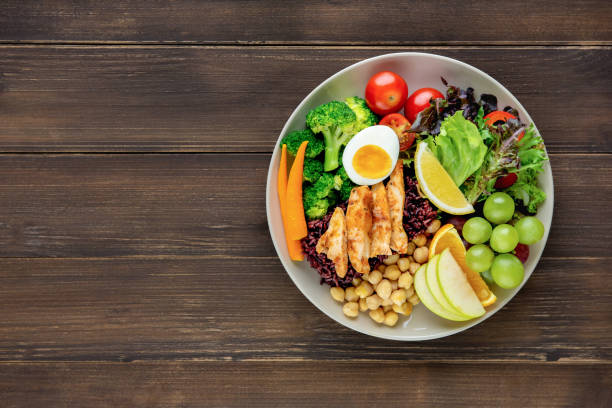A low sodium diet focuses on reducing the amount of sodium (salt) consumed in your daily meals. Excess sodium intake is linked to high blood pressure, heart disease, stroke, and kidney issues. By emphasizing whole, unprocessed foods, and limiting sodium-rich processed items, this diet can significantly improve your cardiovascular health, reduce swelling, and help maintain proper kidney function. It’s a simple yet effective way to promote long-term health and well-being.
What is a Low Sodium Diet?
A low sodium diet is an eating plan that restricts the amount of sodium (a key component of salt) consumed in food. Sodium is essential for body function, including regulating fluids and blood pressure, but excessive intake can contribute to high blood pressure (hypertension), stroke, heart disease, and kidney problems.
A low sodium diet typically involves reducing sodium intake to less than 2,300 milligrams per day, and ideally closer to 1,500 milligrams per day for individuals at higher risk of heart disease, diabetes, or kidney issues.
This diet focuses on consuming whole, unprocessed foods, while limiting high-sodium processed foods, restaurant meals, and certain types of packaged snacks.
Why is Sodium Important?
Sodium plays a critical role in maintaining fluid balance and conducting nerve impulses. However, too much sodium in the bloodstream can draw excess water into the blood vessels, increasing blood volume and raising blood pressure. Over time, this increased pressure can damage the heart, kidneys, and blood vessels.
High sodium intake is primarily linked to:
- Hypertension (high blood pressure): The leading risk factor for heart disease and stroke.
- Kidney disease: Excess sodium strains the kidneys and can lead to kidney dysfunction over time.
- Osteoporosis: High sodium levels can cause calcium loss from bones, weakening them.
- Edema (swelling): Retaining excess sodium in the body can lead to water retention, causing swelling in the hands, feet, or face.
Goals of a Low Sodium Diet:
- Lower blood pressure: Reduce the risk of hypertension and related complications.
- Promote heart health: Prevent heart disease and stroke.
- Support kidney function: Minimize strain on the kidneys and prevent damage.
- Decrease fluid retention: Reduce swelling and bloating.
Daily Sodium Recommendations:
- General Population: Limit sodium intake to 2,300 mg/day (about 1 teaspoon of salt).
- High-Risk Groups: People with high blood pressure, heart disease, diabetes, or kidney disease should aim for 1,500 mg/day.
- Children: Sodium recommendations vary based on age and dietary needs, generally between 1,200-1,500 mg/day.
Health Benefits of a Low Sodium Diet:
Lowers Blood Pressure:
Reducing sodium intake helps relax blood vessels and reduces fluid retention, leading to lower blood pressure. This is especially beneficial for individuals with hypertension or at risk for developing it.
Reduces Heart Disease Risk:
Lowering sodium intake can reduce the strain on the heart, preventing complications like heart attacks, stroke, and heart failure. A low sodium diet, along with other healthy lifestyle habits, improves overall cardiovascular health.
Prevents Kidney Damage:
The kidneys filter excess sodium, but a high-sodium diet increases the workload on the kidneys. A low sodium diet helps protect kidney function, especially for those with existing kidney disease.
Decreases Fluid Retention:
Excess sodium causes the body to retain water, leading to swelling (edema). Reducing sodium helps minimize this issue, making individuals feel less bloated and more comfortable.
Improves Bone Health:
High sodium intake can cause calcium loss through urine, weakening bones and increasing the risk of osteoporosis. A low-sodium diet can help maintain bone density and reduce calcium excretion.
Practical Tips for Following a Low Sodium Diet:
- Cook from Scratch: Preparing meals at home allows you to control the amount of sodium added to your food. Avoid prepackaged sauces, gravies, and prepared meals that are often high in sodium.
- Read Nutrition Labels: Always check the sodium content on food labels. Choose options labeled “low-sodium” or “no salt added.”
- Use Herbs and Spices: Flavor your food with fresh herbs, garlic, onions, lemon juice, or spices instead of salt. This adds flavor without adding sodium.
- Choose Fresh, Frozen, or Low-Sodium Canned Foods: Fresh produce and meats contain little to no sodium, while many canned foods are loaded with salt for preservation.
- Limit Fast Food and Restaurant Meals: Many fast foods and restaurant dishes are high in sodium. Ask for dressings, sauces, and condiments on the side, and avoid or limit salty sides like fries.
- Rinse Canned Foods: If you use canned vegetables, beans, or tuna, rinse them under cold water to remove excess sodium.
- Snack on Healthy Alternatives: Instead of salty snacks like chips or pretzels, opt for raw vegetables, fruits, unsalted nuts, or whole grain crackers.
- Opt for Low-Sodium or Sodium-Free Versions: Many common foods like soy sauce, broths, and canned vegetables have low-sodium versions available. Look for these options in your grocery store.
Sample Low Sodium Meal Plan:
| Meal | Foods |
|---|---|
| Breakfast | Oatmeal with fresh berries and chia seeds; herbal tea |
| Snack | Apple slices with unsalted almond butter |
| Lunch | Grilled chicken salad with mixed greens, cucumbers, tomatoes, olive oil, and lemon dressing |
| Snack | A handful of unsalted almonds and a banana |
| Dinner | Baked salmon with quinoa and steamed broccoli |
| Dessert | Fresh strawberries with a dollop of plain Greek yogurt |
Final Thoughts:
A low sodium diet is an effective way to improve heart health, reduce blood pressure, and protect kidney function. By focusing on whole foods like fruits, vegetables, whole grains, lean proteins, and healthy fats, you can significantly reduce your sodium intake and enhance your overall health. With some simple changes and a commitment to cooking more at home, a low sodium diet is a manageable and beneficial lifestyle choice.
